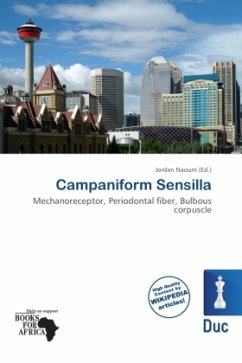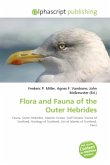Please note that the content of this book primarily consists of articles available from Wikipedia or other free sources online. Campaniform sensilla are mechanoreceptors found in insects. When the exoskeleton bends the resulting strain stimulates the sensilla. The displacement is transmitted down until it reaches the central nervous system. The term campaniform refers to the bell shape appearance of these sensory structures when viewed in cross section.A mechanoreceptor is a sensory receptor that responds to mechanical pressure or distortion. There are four main types in the glabrous skin of humans: Pacinian corpuscles, Meissner's corpuscles, Merkel's discs, and Ruffini corpuscles. There are also mechanoreceptors in hairy skin, and the hair cells in the cochlea are the most sensitive mechanoreceptors, transducing air pressure waves into nerve signals sent to the brain. In the periodontal ligament, there are some mechanoreceptors, which allow the jaw to relax when biting down on hard objects; the mesencephalic nucleus is responsible for this reflex.
Bitte wählen Sie Ihr Anliegen aus.
Rechnungen
Retourenschein anfordern
Bestellstatus
Storno








